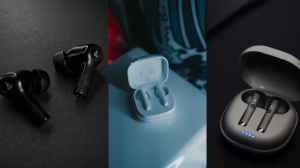The DSLR vs. mirrorless camera debate is more than just an inquisitive point of discussion, rather, it determines your entire photo and videography experience, hence reshaping the future of photography. Mirrorless cameras take a step forward in contemporary times with their innovative features and portable design. Leading camera brands like Canon, Nikon, and Sony have revolutionized their autofocus, low-light performance, and portability. However, the fact that DSLR cameras are still indispensable for professionals cannot be neglected. As they offer long battery life with durable build quality and optical viewfinders, perfect for professionals, hence rule the entire gadget zone industry. But have you wondered, is a mirrorless camera's lightweight design and electronic accuracy sufficient to overthrow a DSLR's mechanical consistency and lens compatibility? Let's find out the major differences between mirrorless and Digital single-lens reflex cameras, and how the latest technology aligns with your creative needs.
Mirrorless Vs DSLR: Choose the Best Camera For Your Needs
In the debate between which type of camera is best, the answer wholly revolves around the type of technology you are seeking for your specific requirements. Mirrorless cameras, with their electronic viewfinders, continuous shooting speed, and compact design, make them easy to carry. DSLRs, on the other hand, are prominent for their battery life, lens compatibility, and optical accuracy, and are suited for sports, wildlife, and studio photography. While top camera companies such as Fujifilm, Panasonic, and Canon continue developing mirrorless autofocus, sensor technology, and in-body stabilization, DSLR users enjoy optical precision and solid handling. The final choice is based on workflow, flexibility, and shooting style, as both systems continue to improve with the latest developments in imaging.
Loading...
Which Camera Type Is Best: Mirrorless or DSLR? Know The Key Differences
Finding the best camera for photography and videography depends on multiple considerations, like shooting style and performance. DSLR cameras employ a mirror system with an optical viewfinder (OVF). In contrast, mirrorless cameras utilize electronic viewfinders (EVF) or LCDs, providing a real-time digital preview of exposure and color balance.
- Size and Weight: Mirrorless cameras are smaller and lighter, making them perfect for travel, vlogging, and street photography. DSLRs are heavier but offer ergonomic stability, which is useful for long shooting sessions.
- Autofocus and Speed: Mirrorless cameras lead in advanced autofocus, with Sony, Canon, and Nikon using AI-driven subject tracking and real-time eye detection. DSLRs employ phase-detection AF, which is good for fast-action and sports photography.
- Battery Life: DSLRs have longer battery life because they don't use power-greedy EVFs. Mirrorless cameras need to be charged often, although battery efficiency is getting better.
- Lens Compatibility: DSLRs can use a huge number of older lenses, whereas mirrorless cameras tend to need adapters but take advantage of next-generation lens technology.
- Video Capabilities: Mirrorless cameras rule in videography with 4K and 8K recording, better in-body stabilization, and higher frame rates, making content creators' primary choice.
Read More: Best Camera For Photography
Disclaimer: At HerZindagi, we prioritize providing the up-to-date information on the latest trending commodities and goods. This Article is written and vetted by our in-house category authors in sync with the Google guidelines on product reviews and shoppable content. HerZindagi is in an associate partnership, so we may earn a part of the revenue when you make a purchase. We shall not be liable for any claim under applicable laws, including but not limited to the Consumer Protection Act, 2019, concerning the products. The products listed in this article are in no particular order of priority.
Loading...



